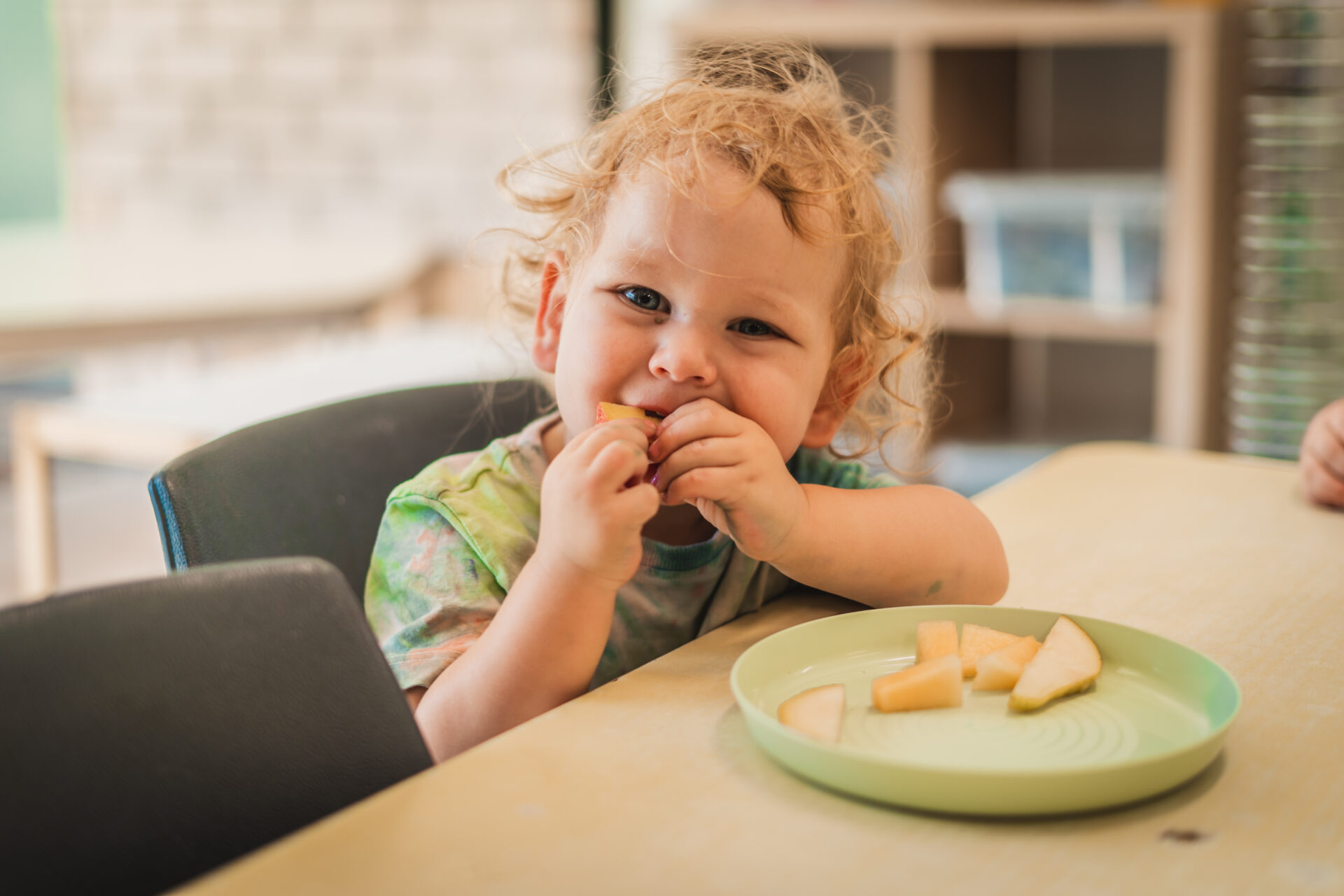At Arden Early Learning we recognise the importance of providing children with nutritious meals that energise their growing bodies and foster their development. A well-rounded lunchbox not only satisfies hunger but also nurtures their minds and bodies, setting the stage for a day brimming with exploration and play.
From creating a balanced lunch to introducing diverse flavours and textures, we’ve got you covered with practical recommendations for packing lunchboxes for your child:
1. Aim to include foods from all five food groups to ensure a balanced and nutritious meal. These groups include:
- Fruits: Pack a mix of fresh fruits like apple slices, berries, grapes, or mandarin segments. You can also include dried fruits or fruit cups packed in natural juice.
- Vegetables: Include a colorful assortment of vegetables such as carrot sticks, cucumber slices, cherry tomatoes, or bell pepper strips. Pair them with a tasty dip like hummus or tzatziki for added flavor.
- Protein: Opt for lean sources of protein such as grilled chicken strips, hard-boiled eggs, tuna salad, or hummus wraps. You can also include cheese cubes or slices for a calcium boost.
- Grains: Choose whole grain options like whole wheat bread, wraps, or crackers. You can fill them with nutritious fillings like turkey and avocado, tuna salad, or egg and lettuce.
- Dairy: Include a dairy item such as a small carton of milk, yogurt, or cheese stick to provide calcium and other essential nutrients.
2. Include Hydration Options:
Don’t forget to include hydrating beverages to keep children refreshed throughout the day. Water is the best choice for staying hydrated, but you can also include options like:
- Unsweetened fruit juice: Choose 100% fruit juice without added sugars and limit the portion size to a small carton or pouch.
- Milk: Include a small carton of milk or a dairy-free alternative like soy milk or almond milk.
- Infused water: Add natural flavor to water by infusing it with slices of fruits like lemon, lime, orange, or cucumber.
3. Our top tips:
- Manage Portions: Avoid overloading lunchboxes and opt for smaller portion sizes, which are more suitable for younger children.
- Finger Foods: Opt for smaller finger foods that are easier for younger children to manage.
- Sandwiches: Cut sandwiches into finger-sized strips, triangles, or squares for easier handling.
- Fruit and Veggies: Prepare fruits and vegetables in a way that they can be easily picked up and chewed, such as sliced cherry tomatoes, corn kernels, lightly steamed carrots, or grated apples.
- Bento Style: Consider using bento-style lunchboxes, which allow for food separation, ideal for children who prefer their food segregated.
- Check Accessibility: Ensure that children can open containers and packets in their lunchbox, such as fruit peel tabs, yogurt tubs, snack packets, and Tupperware lids.
- Introduce New Foods Gradually: Avoid overwhelming children with too many new foods at once. Introduce one new food item at a time alongside familiar foods to encourage acceptance.
A well-balanced lunch box is essential for providing children with the nutrition and fuel they need for a day filled with learning, exploration, and fun. Let’s work together to promote healthy eating habits and support the well-being of our little ones!
For more information about child nutrition visit: https://www.healthylunchboxweek.org.au/
For some delicious lunch box recipes check out this blog.









